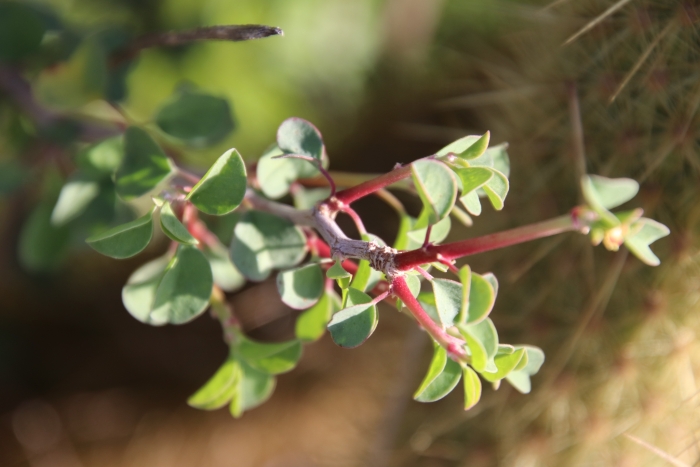Cliff Spurge
(Euphorbia misera)
Cliff Spurge (Euphorbia misera)
/
/

Millie Basden
CC BY 4.0
Image By:
Millie Basden
Recorded By:
Copyright:
CC BY 4.0
Copyright Notice:
Photo by: Millie Basden | License Type: CC BY 4.0 | License URL: http://creativecommons.org/licenses/by/4.0/ | Rights Holder: Millie Basden | Publisher: iNaturalist | Date Created: 2019-01-29T10:53:25-08:00 |






















































Estimated Native Range
Summary
Euphorbia misera, commonly known as Cliff Spurge, is a semi-deciduous shrub native to coastal sage scrub and chaparral habitats, as well as arroyos in Southern California, the Mexican Pacific Islands, and Northwest Mexico. It typically grows to a height of 3-5 feet (0.9-1.5 meters) and a width of 2-3 feet (0.6-0.9 meters), with a form that can be either erect or mounding. The plant is characterized by small, rounded, hairy leaves and inflorescences at the tips of the branches. It produces distinctive flowers with a central nectar disc, a bright red appendage with scalloped edges, and a light yellow fringe. The flowering season spans spring, summer, and winter, offering a long period of visual interest. When the leaves or branches are ruptured or cut, an acrid, milky sap is exuded, which is a characteristic feature of many Euphorbias.
Cliff Spurge is valued for its drought tolerance and unique flowering structure, making it suitable for xeriscaping and as an accent plant in water-wise gardens. It thrives in full sun with low to very low water requirements and prefers soils with medium to fast drainage. While it is not commonly found in widespread cultivation, it can be a conversation piece in a native plant garden or a naturalized setting. Gardeners should handle this plant with care due to its toxic sap, which can cause skin irritation. There are no major diseases or pests that significantly affect this species, but it is important to avoid overwatering to prevent root rot.CC BY-SA 4.0
Cliff Spurge is valued for its drought tolerance and unique flowering structure, making it suitable for xeriscaping and as an accent plant in water-wise gardens. It thrives in full sun with low to very low water requirements and prefers soils with medium to fast drainage. While it is not commonly found in widespread cultivation, it can be a conversation piece in a native plant garden or a naturalized setting. Gardeners should handle this plant with care due to its toxic sap, which can cause skin irritation. There are no major diseases or pests that significantly affect this species, but it is important to avoid overwatering to prevent root rot.CC BY-SA 4.0
Plant Description
- Plant Type: Shrub
- Height: 3-5 feet
- Width: 1.5-3 feet
- Growth Rate: Moderate
- Flower Color: Red, White, Yellow
- Flowering Season: Spring, Summer, Winter
- Leaf Retention: Semi-Deciduous
Growth Requirements
- Sun: Full Sun
- Water: Low, Very Low
- Drainage: Medium, Fast
Common Uses
Bee Garden, Bird Garden, Butterfly Garden, Deer Resistant, Drought Tolerant, Low Maintenance, Rabbit Resistant
Natural Habitat
Native to coastal sage scrub and chaparral habitats, as well as arroyos in Southern California, the Mexican Pacific Islands, and Northwest Mexico
Other Names
Common Names: Coast Spurge
Scientific Names: , Euphorbia misera, Euphorbia benedicta, Trichosterigma miserum, Trichosterigma benedictum,
GBIF Accepted Name: Euphorbia misera Benth.